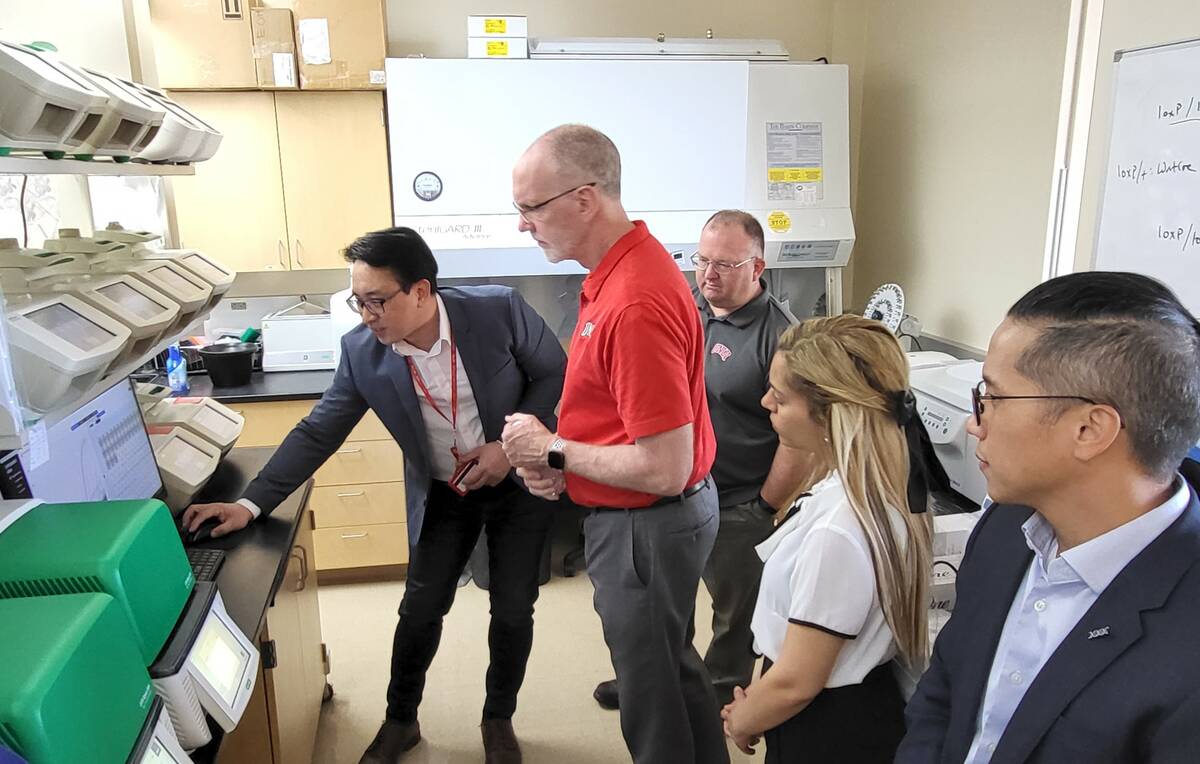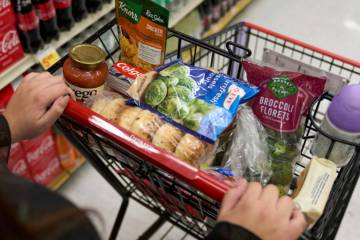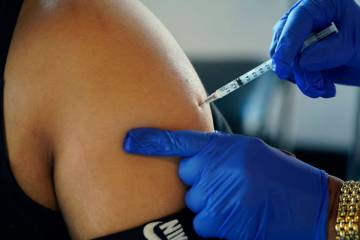Nevada has very high levels of COVID-19 in wastewater. Should we worry?
Tourists who flocked in droves to Las Vegas over the Fourth of July holiday weekend helped spur a rise in COVID-19 infections, experts say.
“We have a surge in viral illnesses for July 4 in particular. For summer holidays, we’re always prepared for a surge in tourists that visit Las Vegas this weekend,” said Dr. Ketan Patel, medical director of University Medical Center’s Adult Emergency Department.
“(July 4) was very close to a weekend where things are going around on the city, large events, international soccer games, concerts, and everything. It brings and draws a lot of people into the city,” Patel added.
The recent heatwave also has been one of the risk factors in increasing infections.
“What heat is doing is, everybody stays indoors in a crowded area, aggregated area. What you’re going to definitely see is a huge, bigger spread. It’s an opportunity for spread,” said Dr. Anil Mangla, director of the Southern Nevada Health District’s Disease Surveillance and Control Division.
Notably, President Joe Biden on Wednesday tested positive for COVID-19 during a visit to Las Vegas.
Increase of COVID-19 in wastewater levels
Nevada is among seven states with “very high” levels of COVID activity in wastewater.
According to the CDC , the Wastewater Viral Activity Level is a calculated measure that allows the CDC to aggregate wastewater sample data to get state/territorial, regional and national levels and to see trends over time. The current level for each state and territory is categorized into minimal, low, moderate, high, or very high.
Six other states — California, Oregon, Texas, Arkansas, Florida and Maryland — also reported very high levels of COVID-19 activity in wastewater.
According to the CDC, states fall into the “very high” category when COVID wastewater activity levels are measured at 8 or higher.
Nevada’s COVID wastewater activity levels were at 12.31, which is significantly higher than wastewater activity levels for the nation (4.98) and region (7.23).
Wastewater data often serve as an early warning sign for increasing or decreasing infections, according to UNLV Professor Edwin Oh.
As of July 15, the Southern Nevada Health District reported 11 COVID-related deaths within the last six weeks.
The health district no longer collects information on the number of COVID-related hospitalizations, said Mangla.
However, the health district does track the percentage of emergency department visits that are potentially related to COVID-19. As of July 15, the health district reported 2.3 percent of emergency department visits were potentially related to COVID-19.
The percentage of visits potentially related to COVID-19 has increased from 1.8 percent on June 18 to 2.5 percent on June 25. The percentage of COVID-19 visits has stabilized, ranging from 2.3 percent to 2.5 percent from June 25 to July 15.
What could this mean for Nevada?
“If we see an increase like we do now, that means we’re looking at a future increase in infections, or viral infections,” Oh explained.
“Given that there are high levels of SARS-COV-2 in the wastewater now, it’s suggestive that there are a lot of individuals who are asymptomatic and or symptomatic that are shedding this virus into that wastewater,” he added.
In June, KP.2 or a mutation of the FLiRT subvariant was the dominant strain in Clark County, accounting for 34 percent of the samples collected. LB.1 or a mutation of the Omicron variant was the next-most dominant strain, accounting for 29.5 percent of samples collected.
The LB.1 and KP.2 or FLiRT strains are more transmissible, but they are also less severe, Mangla said.
Concern for vulnerable populations
Given that the majority of people have been vaccinated and/or have recovered from past infections, there is immunity within the general community, Oh said.
However, that’s not the case for more vulnerable populations, such as elderly people or people with underlying conditions.
“In certain populations that are a little bit more vulnerable, that’s where we’re going to be more concerned,” Oh said.
Mangla recommends getting vaccinated especially with the new vaccine because new versions of the vaccine contain the KP.2 strain. Mangla also recommends masking, avoiding large crowds and staying home in the event of a positive COVID-19 test result.
Contact Annie Vong at avong@reviewjournal.com.










































